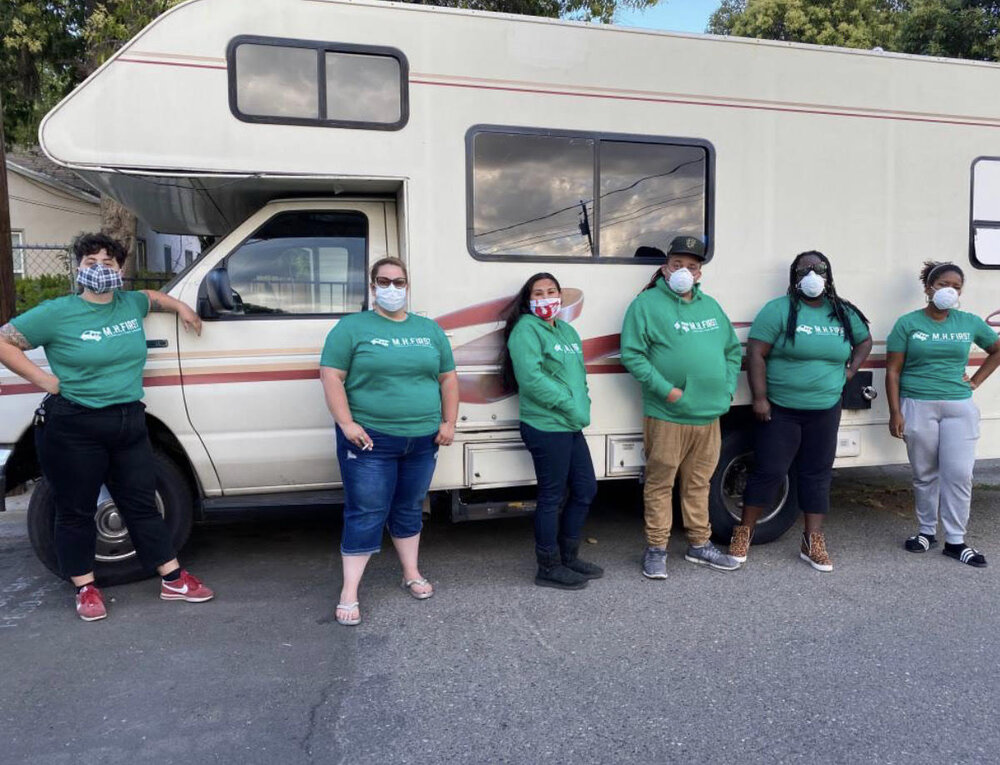A new study evaluating a partnership of police and mental health workers called a “co-response team” (CRT) suggests that CRT responses may reduce short-term risks of incarceration for persons experiencing a mental health crisis.
While police are often the first and only agency to respond to a mental health crisis, police response can escalate a crisis, leading to hospitalization, incarceration, or the use of lethal force. In 2015, according to an analysis by the Washington Post, police, on average, “shot and killed someone who was in mental crisis every 36 hours in the first six months of this year.”
Police involvement in involuntary psychiatric commitments has been steadily increasing. Black people are more likely to become involved with mental health services through law enforcement and involuntary commitment, making police involvement in mental health crises both a disability justice and a racial justice issue.
Persons with mental illnesses frequently become entangled with the criminal legal system rather than in treatment or critical social support. As a result, as many as one in four people with mental disorders have been arrested.

The CRT is one intervention that stakeholders have developed to divert the pathway from crisis to incarceration or hospitalization. This model partners a police officer with a social or medical service provider, such as a mental health clinician, licensed social worker, or medical professional.
Early results suggest that this model is an effective diversion: one retrospective study found that a CRT response was less likely to result in psychiatric hospitalization. However, there is no research examining longer-term emergency medical services and criminal justice outcomes after CRT intervention.
To test the effectiveness of the CRT intervention, the authors compared immediate and long-term outcomes of people in crisis who received a response by a co-response team and people in similar situations to whom the police responded as usual. Through a weighted statistical analysis, the authors found that:
“CRT response resulted in a lower likelihood of arrest at the initial crisis incident; however, in the following year, these individuals had more emergency medical services contacts than did participants to whom the police responded as usual.”
The authors also found that among Black individuals, those who received a CRT response were less likely to have an immediate arrest, compared with those to whom the police responded as usual.
While long-term demands for emergency medical services were not curbed by the CRT response (compared with the police-only response), the authors hypothesize that follow-up services may improve engagement with stabilizing treatment services, reducing the likelihood of future crises. But, overall, as the authors point out, “CRT models continue to proliferate, with limited evidence of their effectiveness.”
While the authors considered only crisis response models involving some element of police presence, alternative models such as Mental Health First Oakland are cropping up to meet the need for community-based responses to crises without any police involvement.
Mental Health First Oakland, part of the Anti Police-Terror Project, works to “interrupt and eliminate the need for law enforcement in mental health crisis first response by providing mobile peer support, de-escalation assistance, and non-punitive and life-affirming interventions, therefore decriminalizing emotional and psychological crises and decreasing the stigma around mental health, substance use, and domestic violence, while also addressing their root causes: white supremacy, capitalism, and colonialism.”
Models like this one effectively provide community-based services without recourse to potentially lethal force, incarceration, and arrest – factors that work to escalate, rather than resolve, psychological and emotional crises.
****
Bailey, K., Lowder, E., Grommon, E., Rising, S., and Ray, B. (2021). “Evaluation of a police-mental health co-response team relative to traditional police response in Indianapolis.” Psychiatry Online. (Link)














